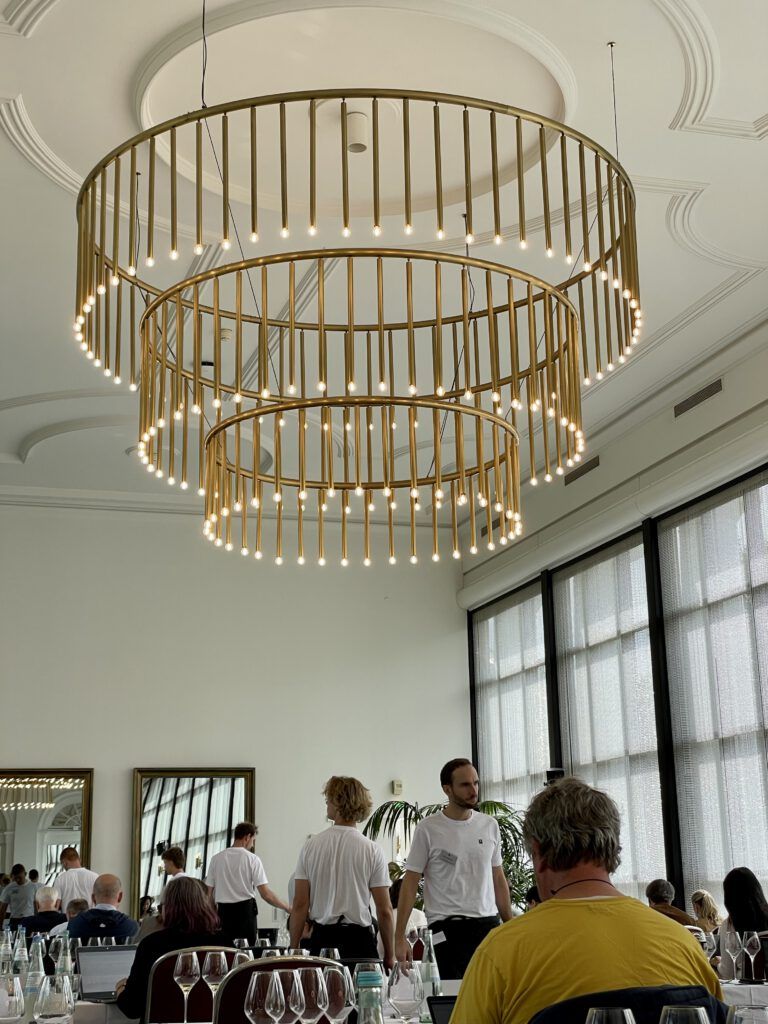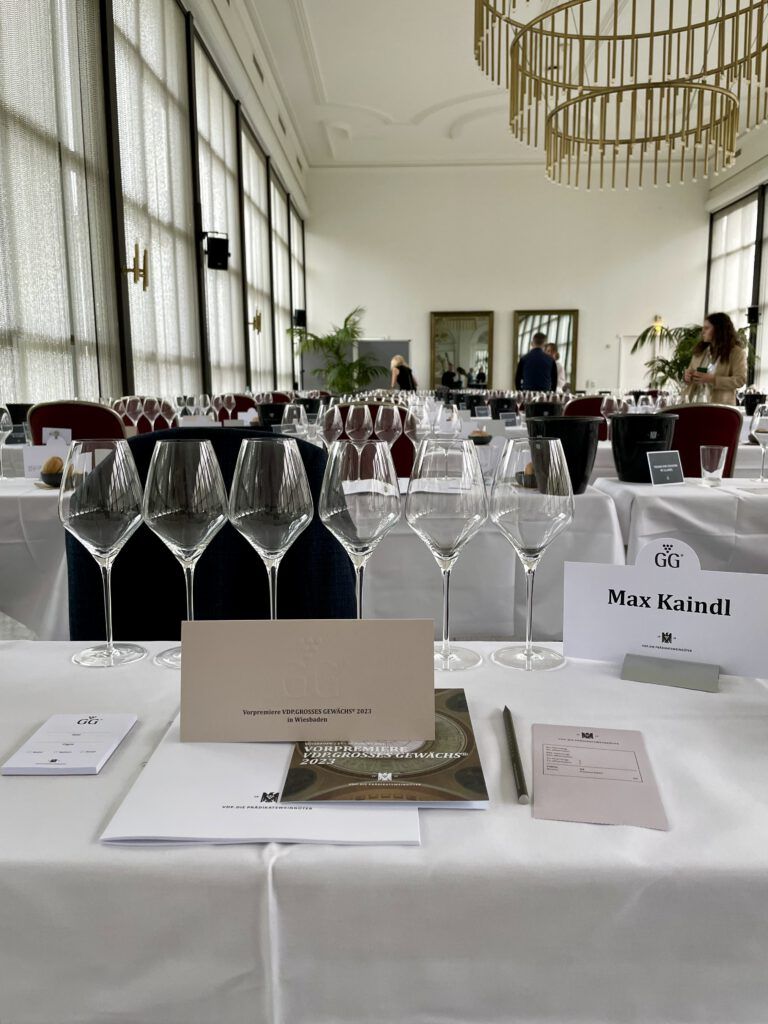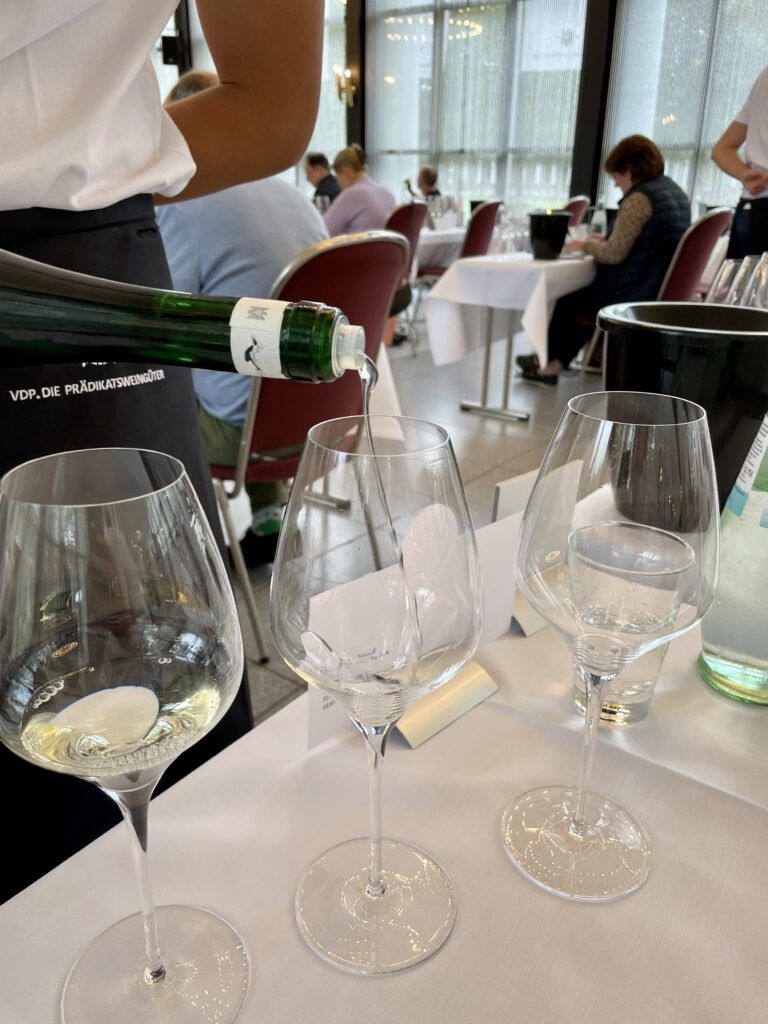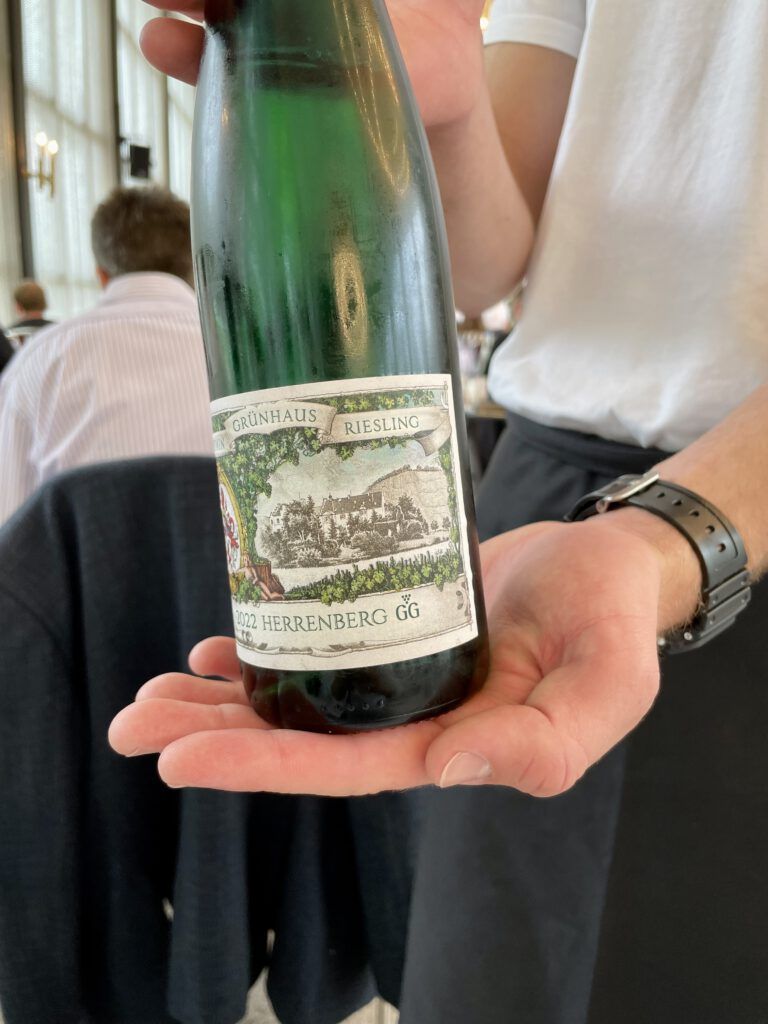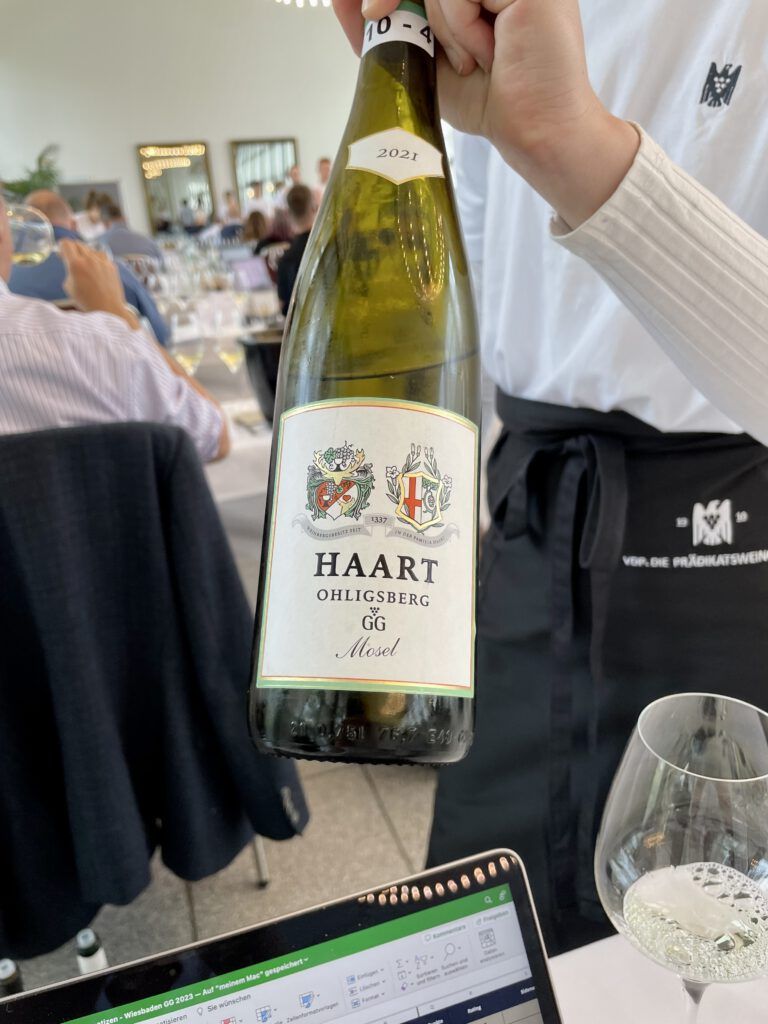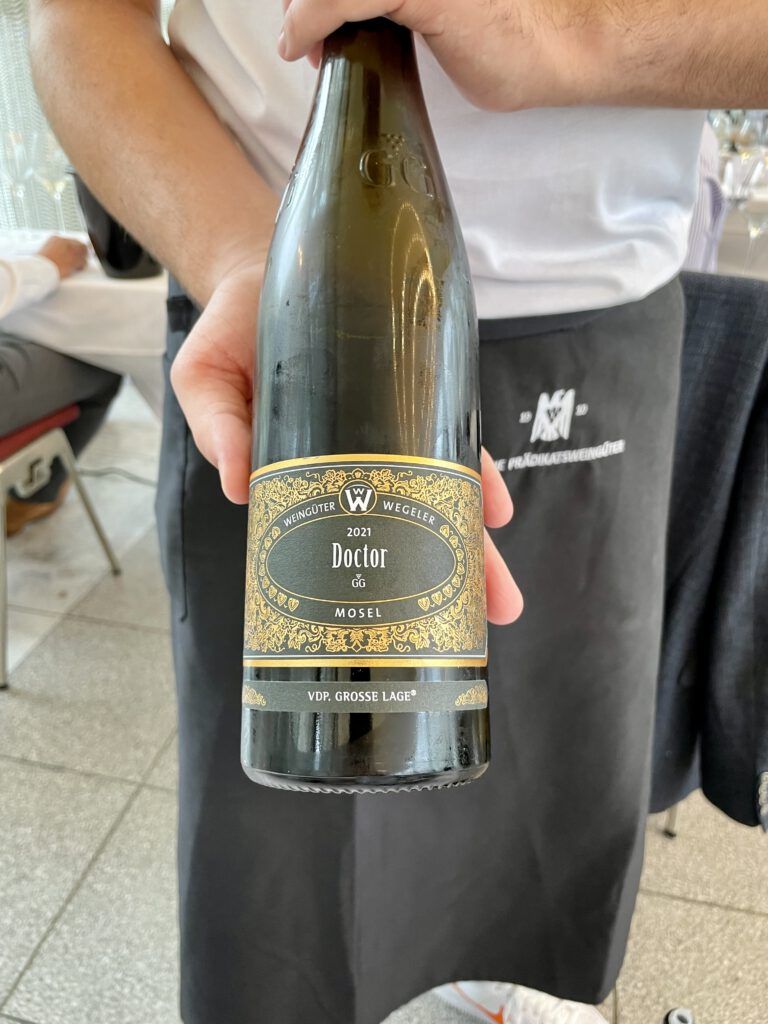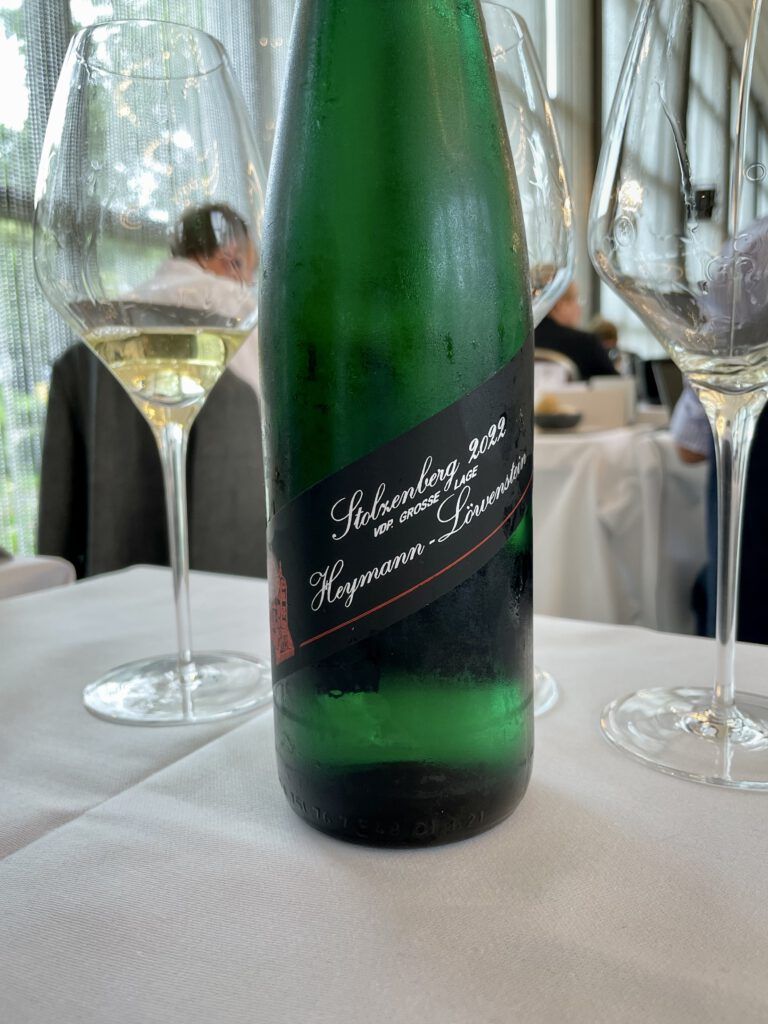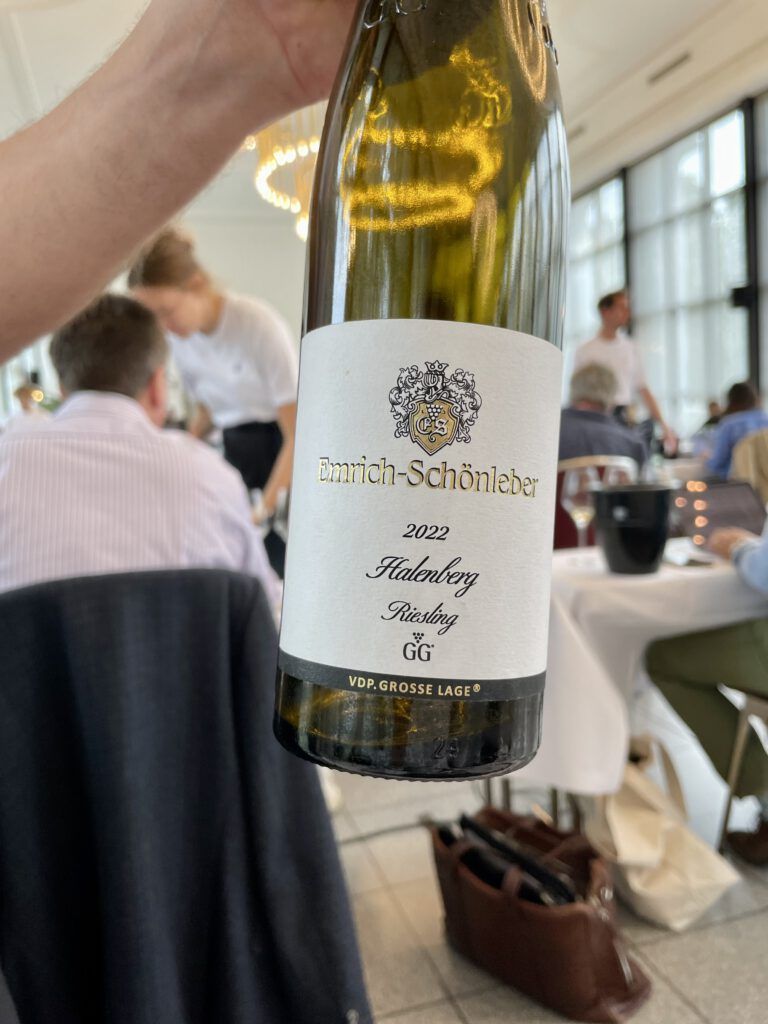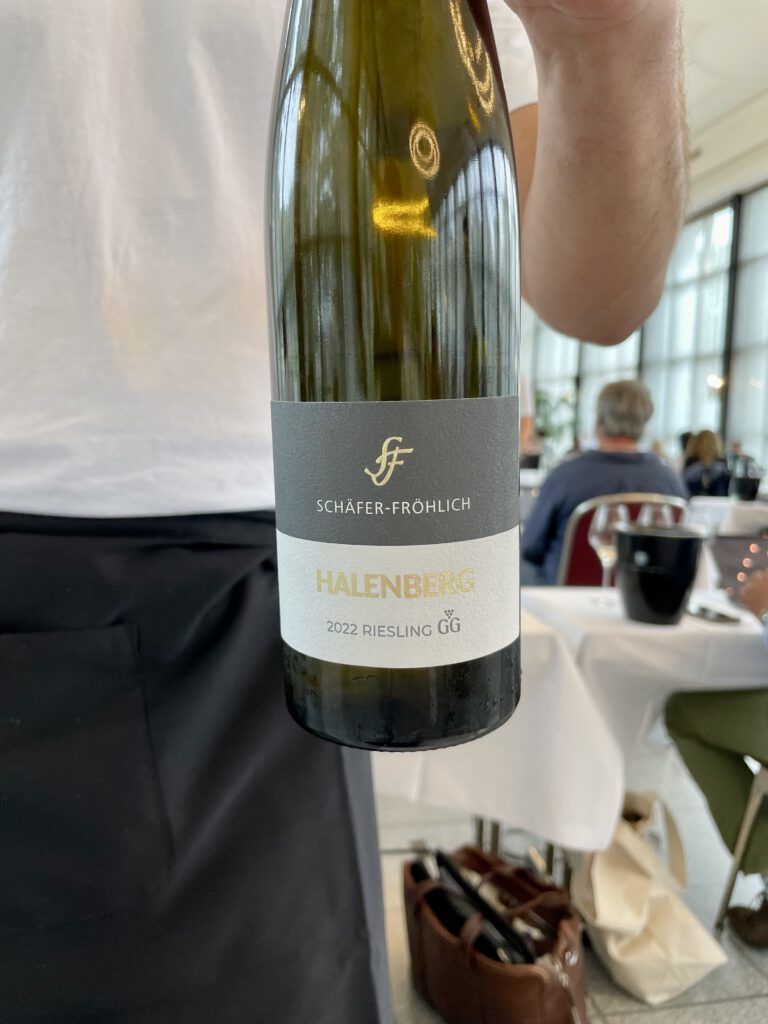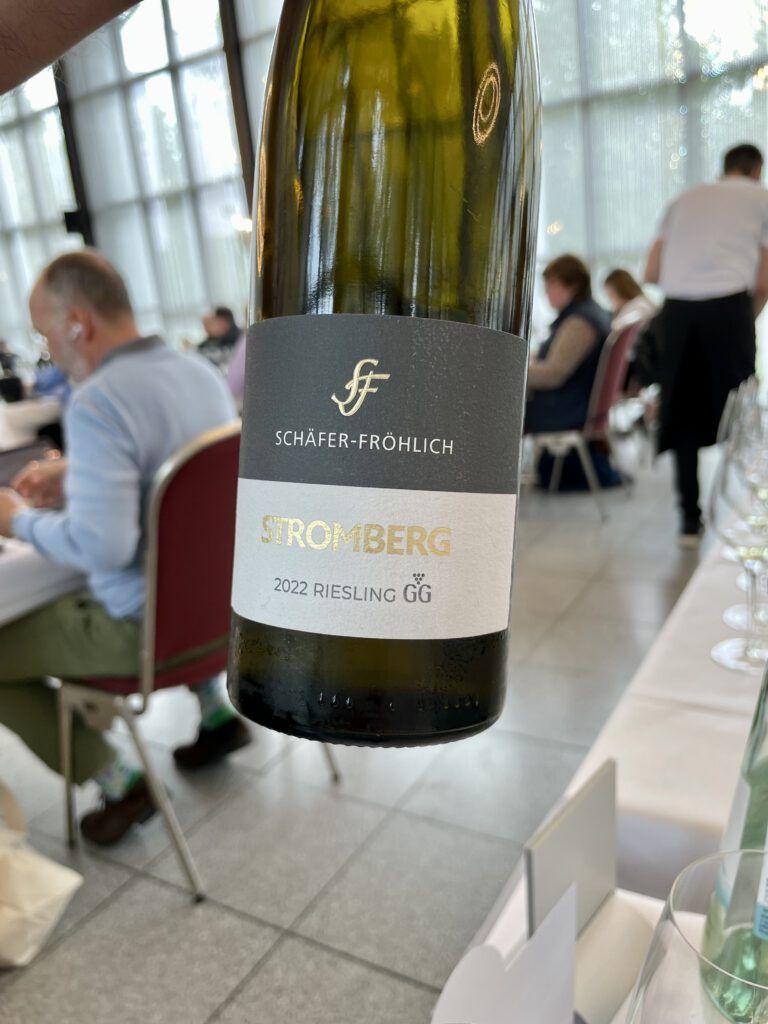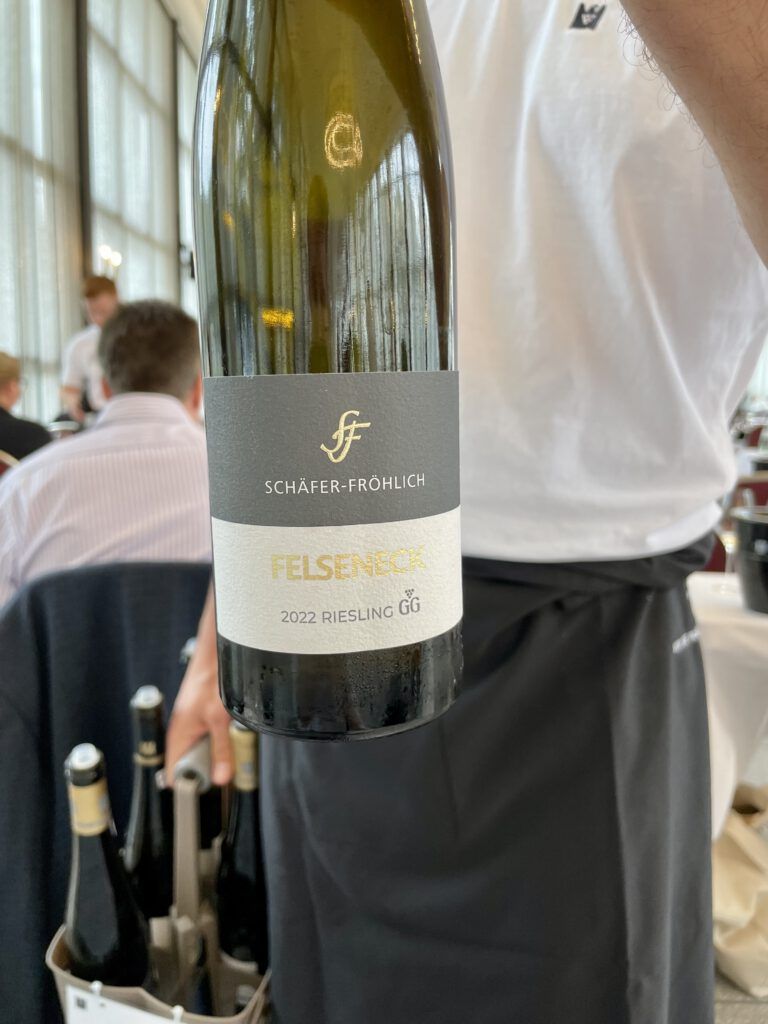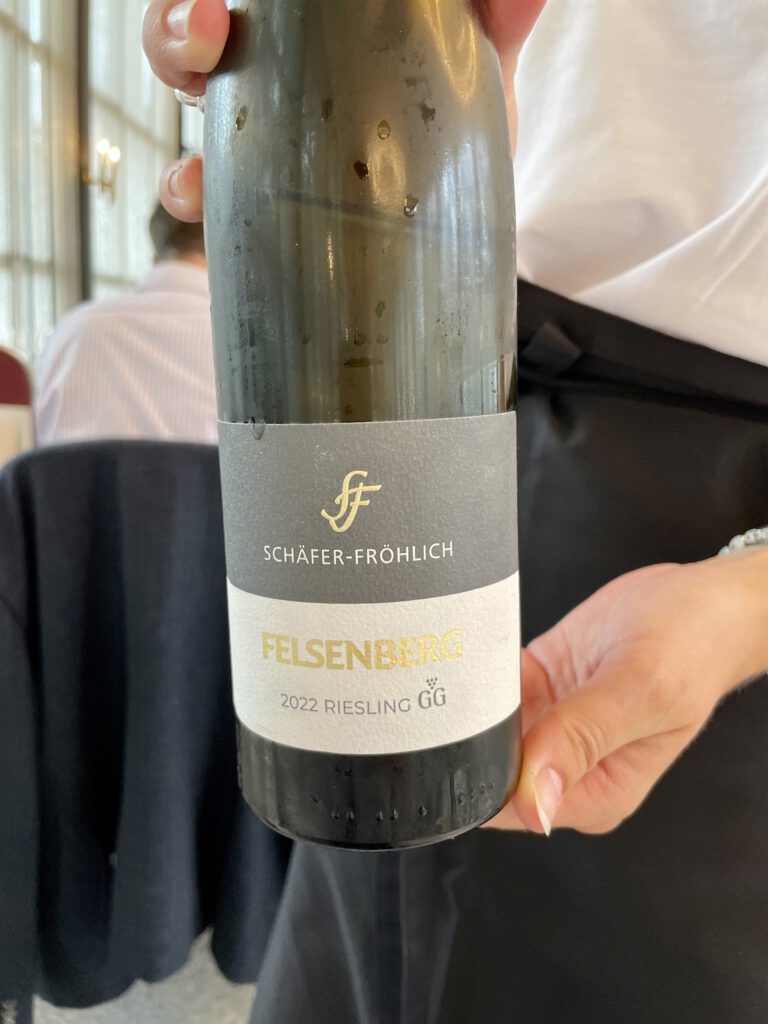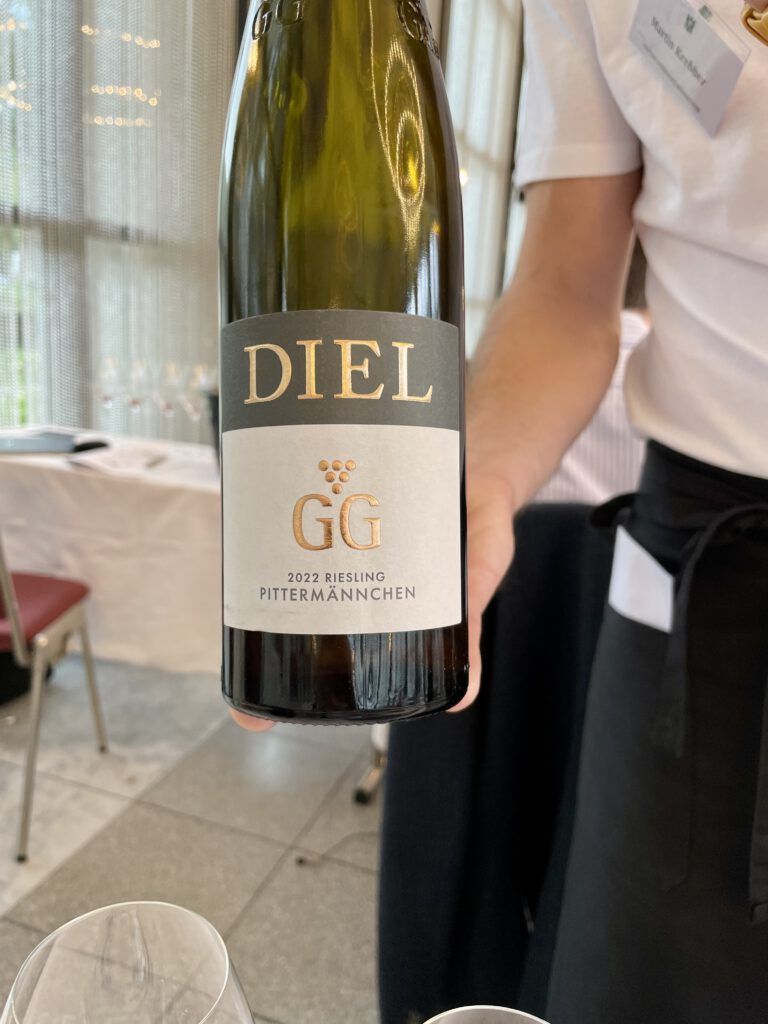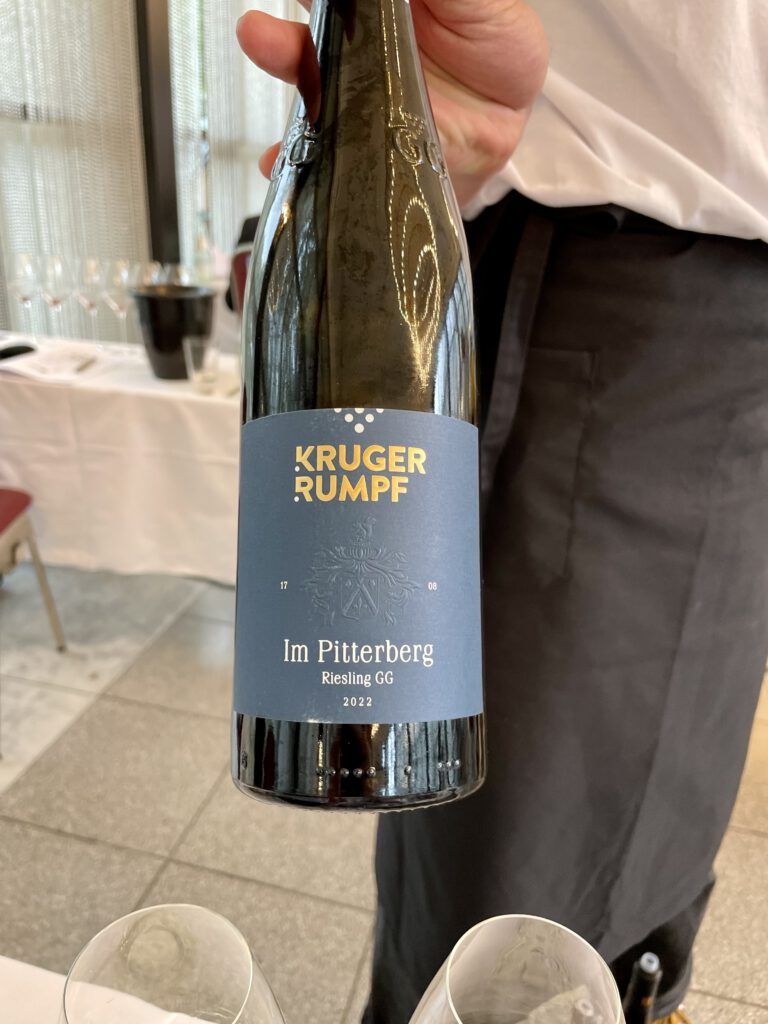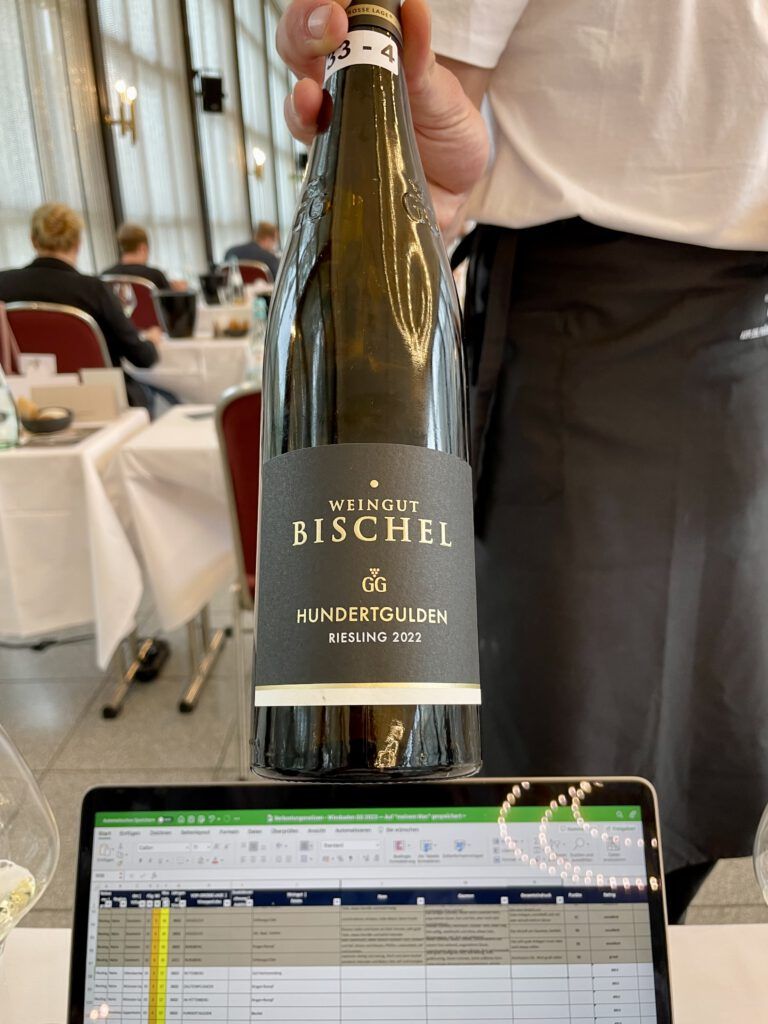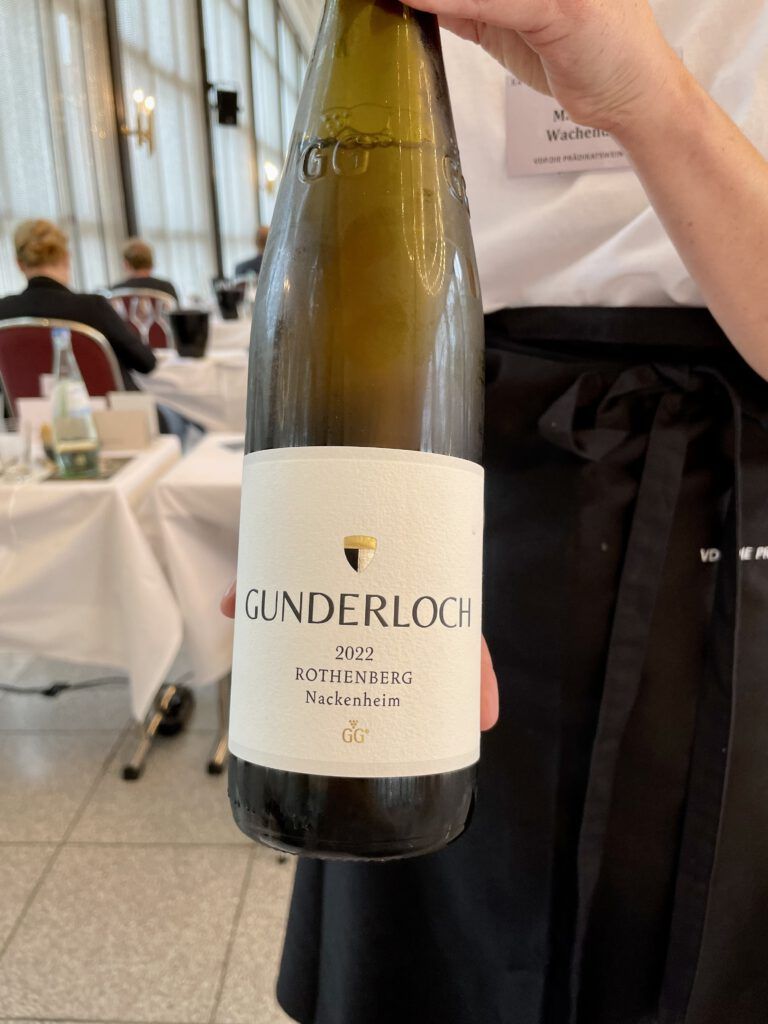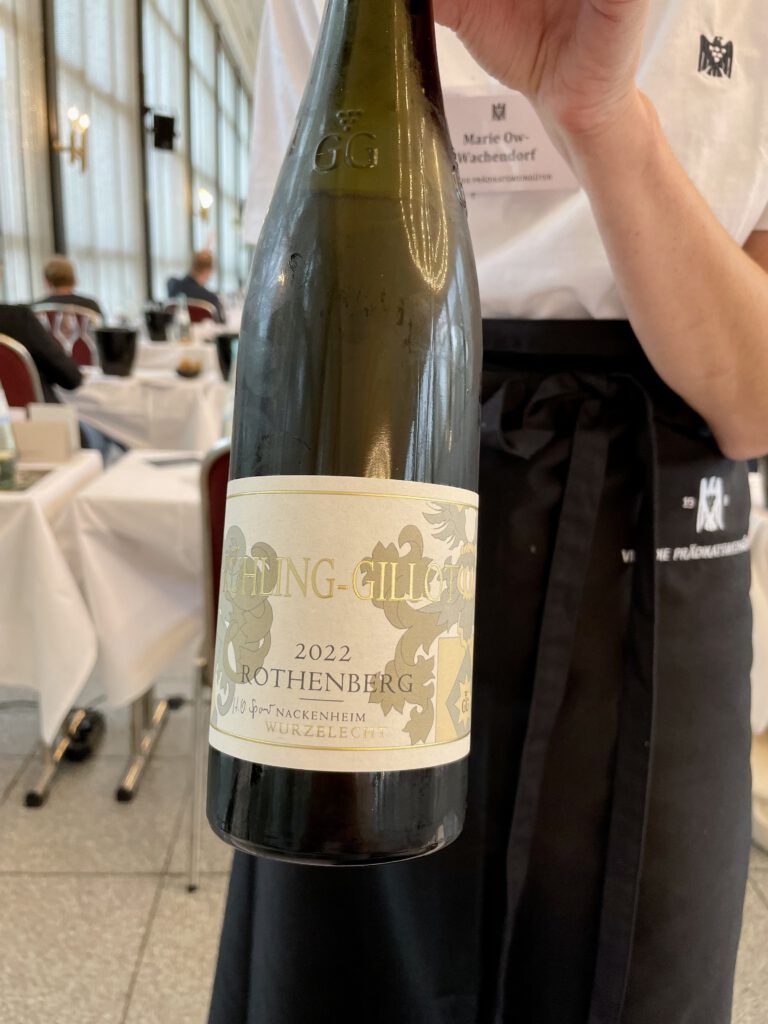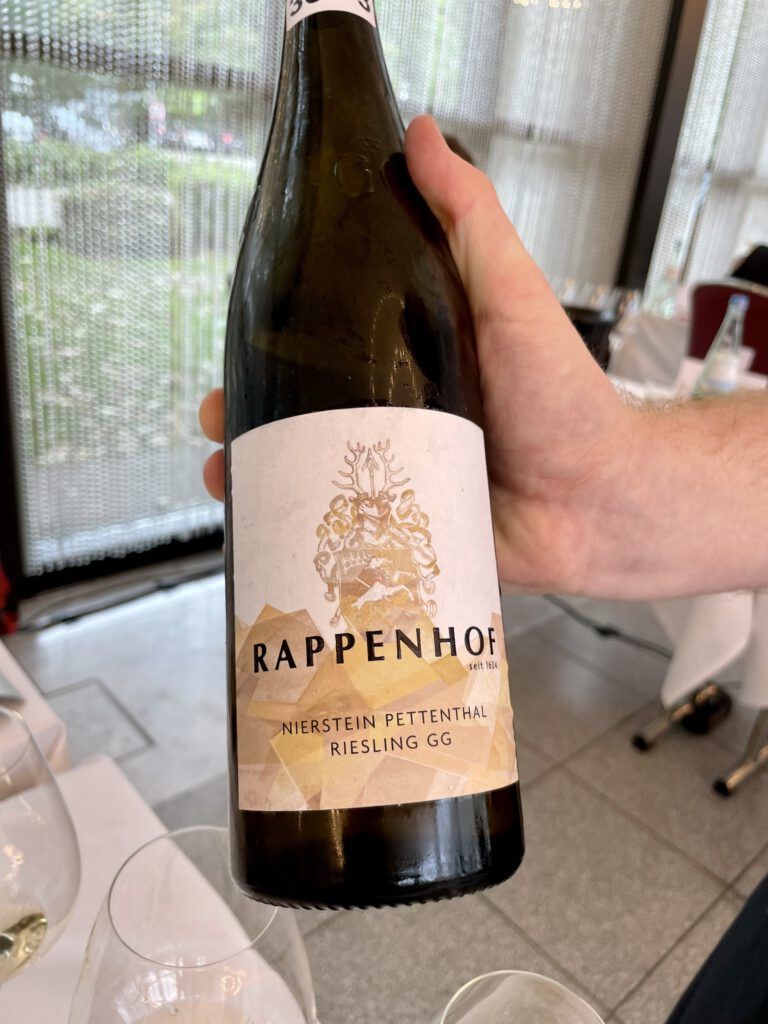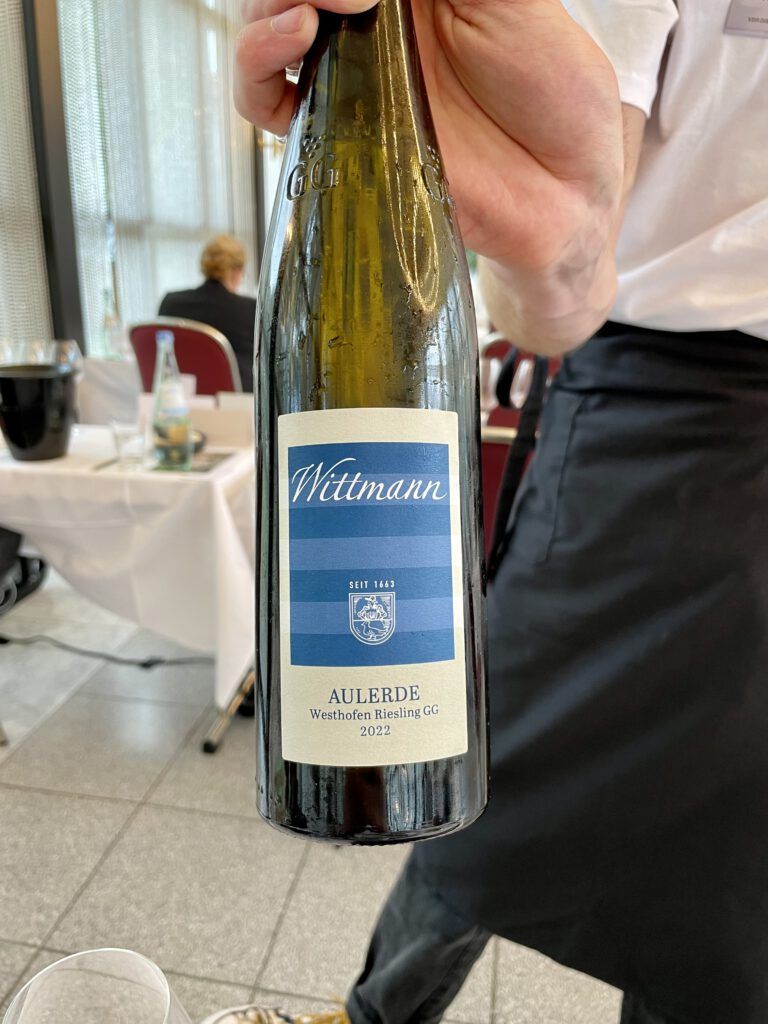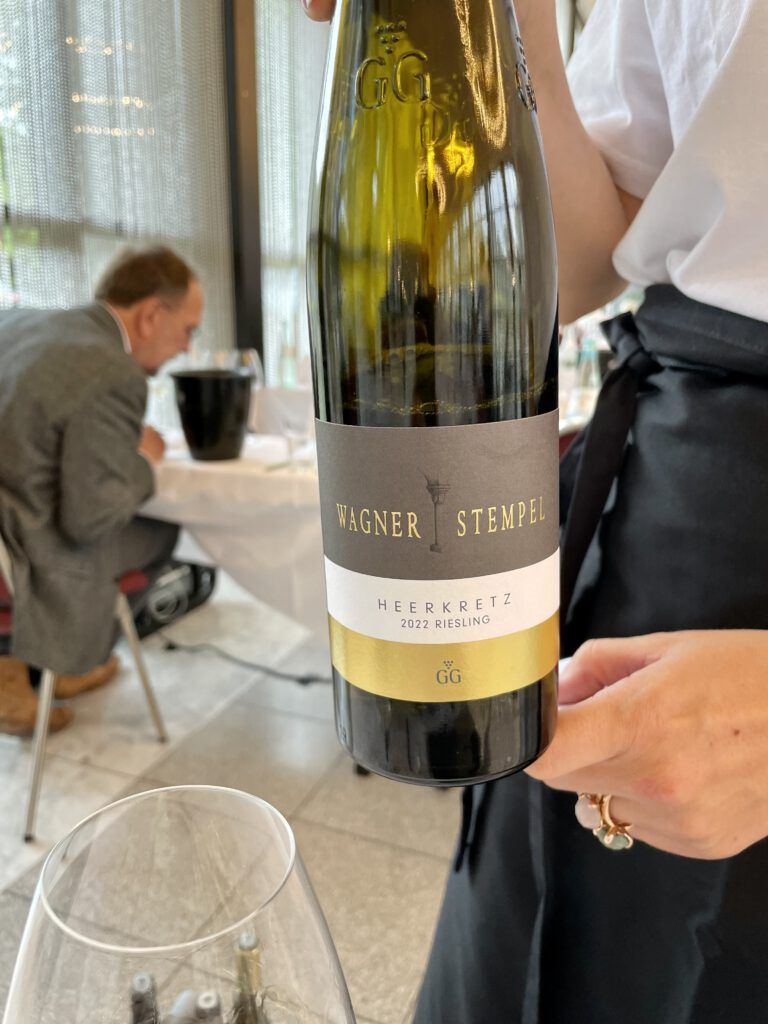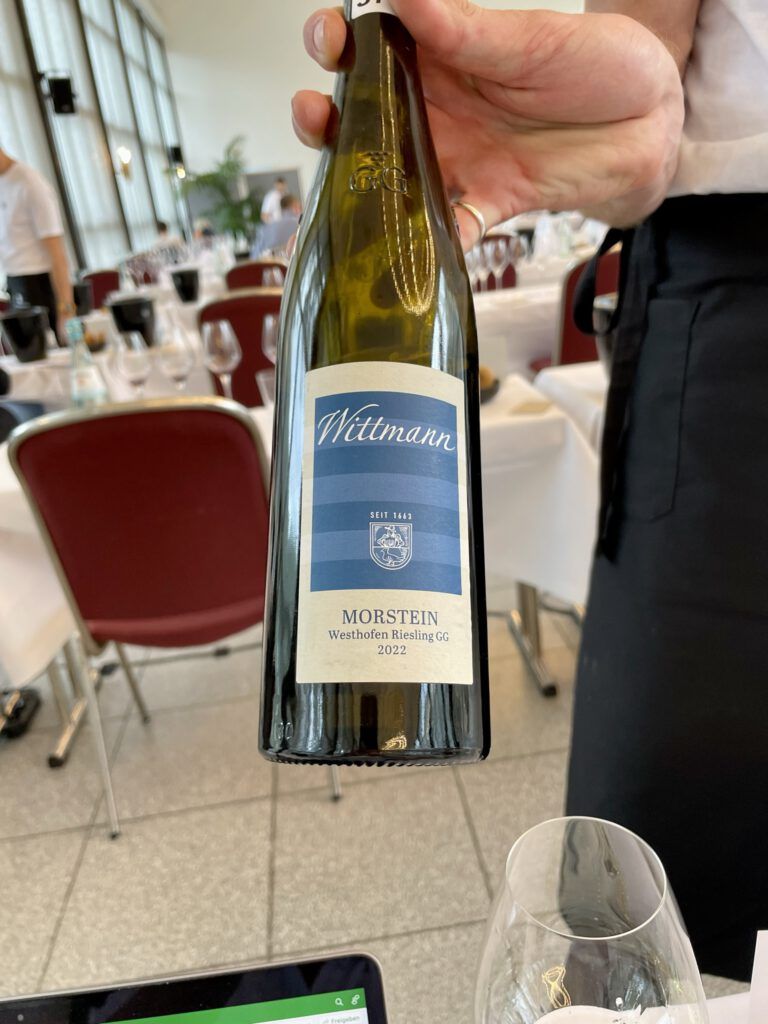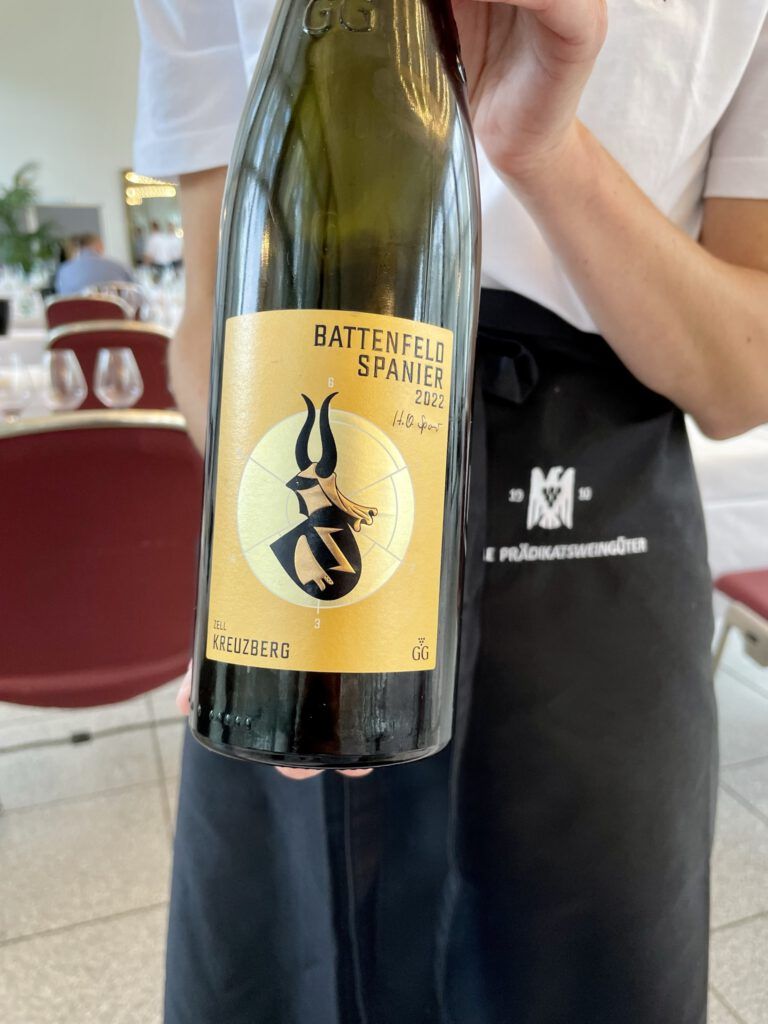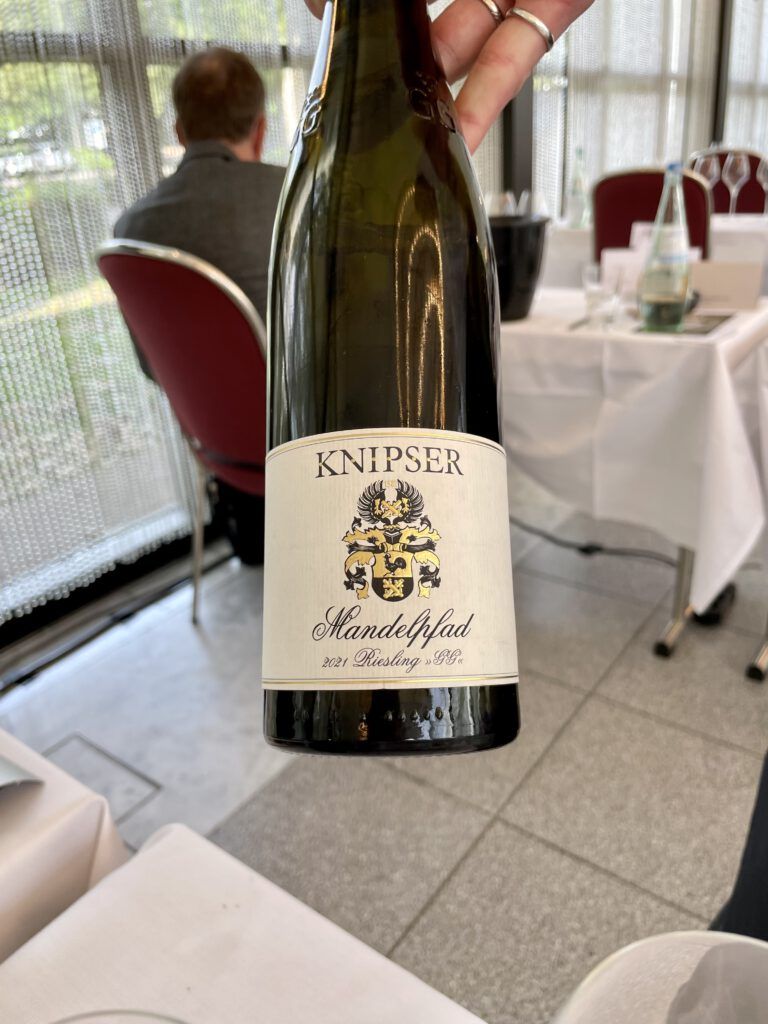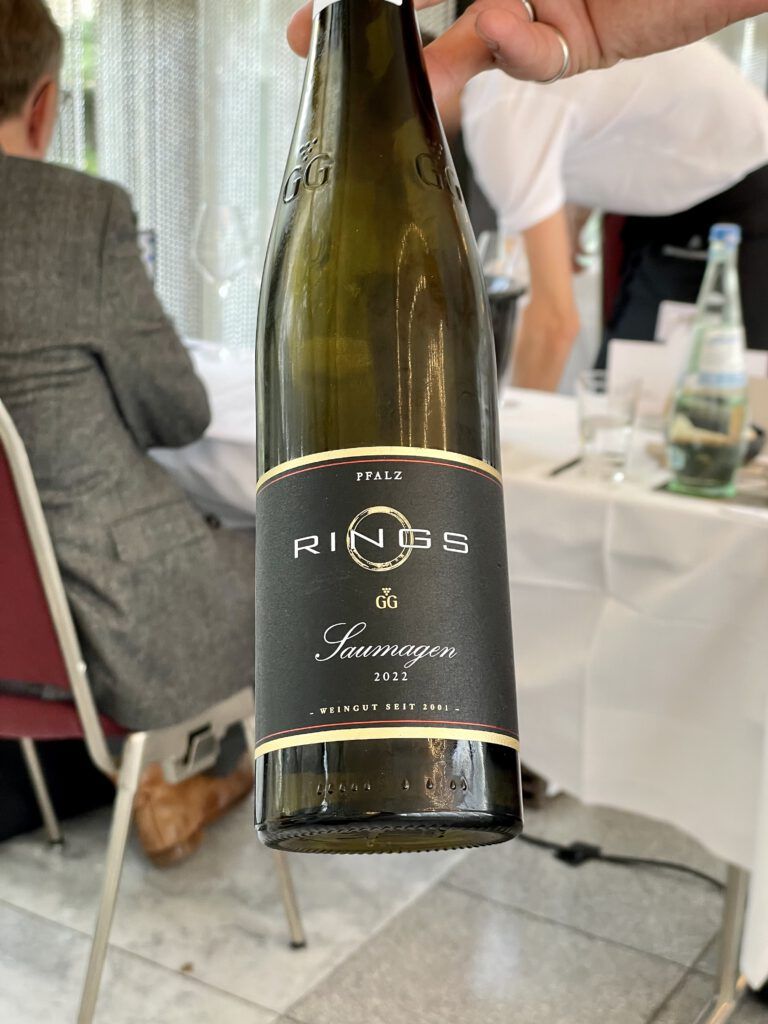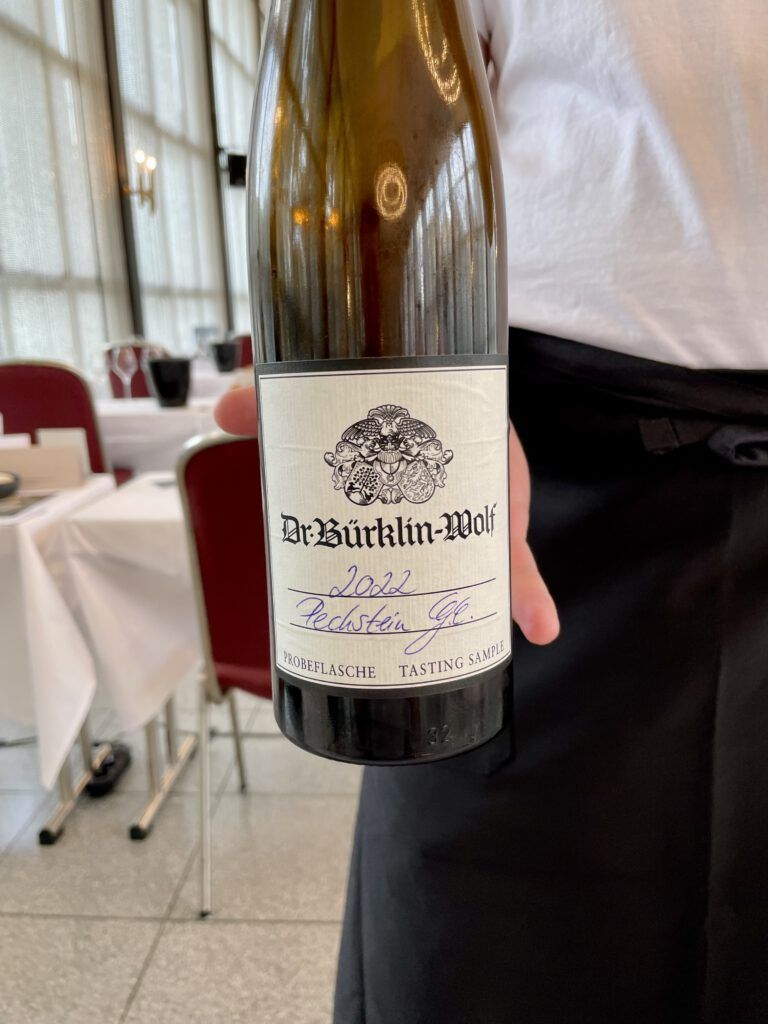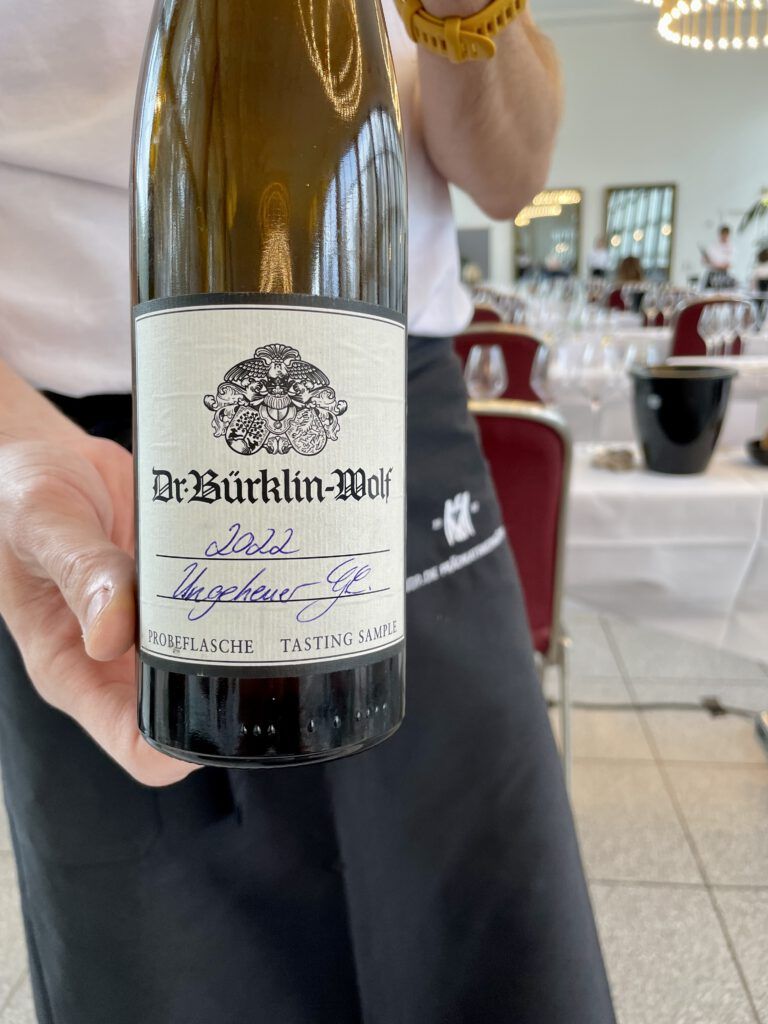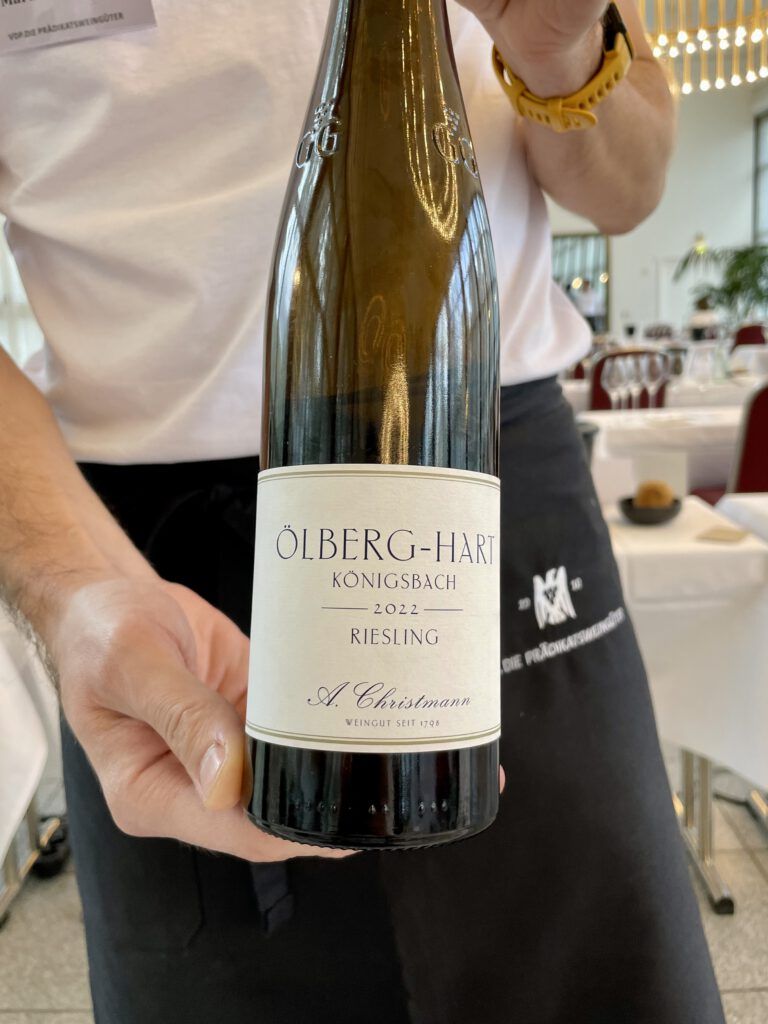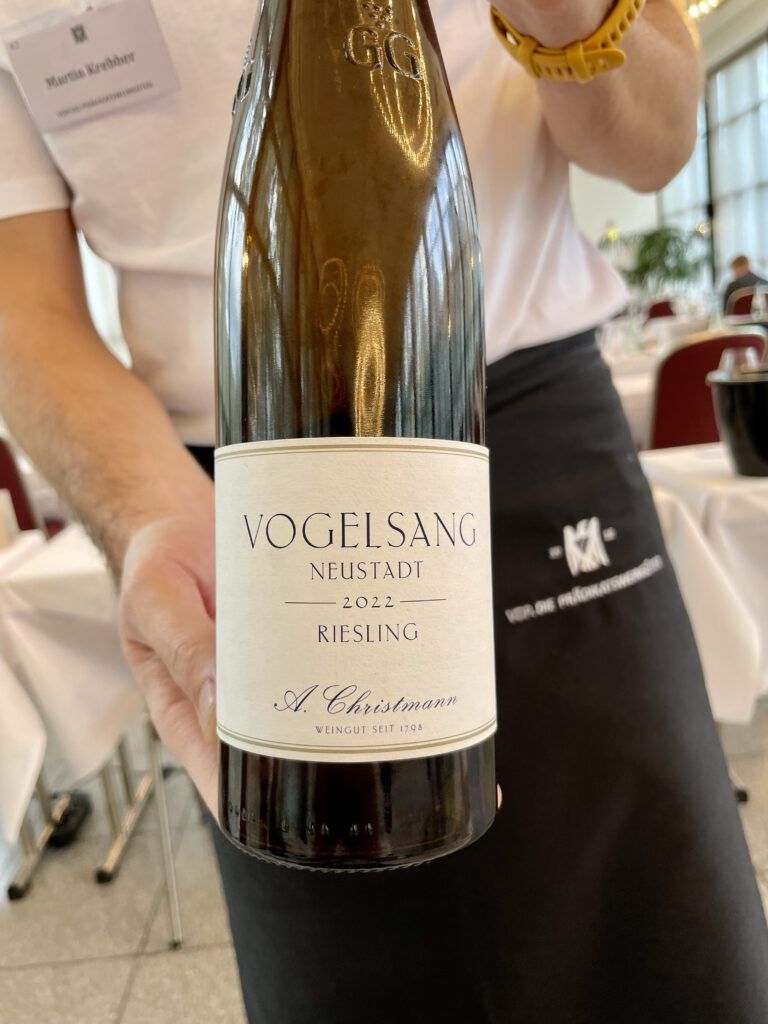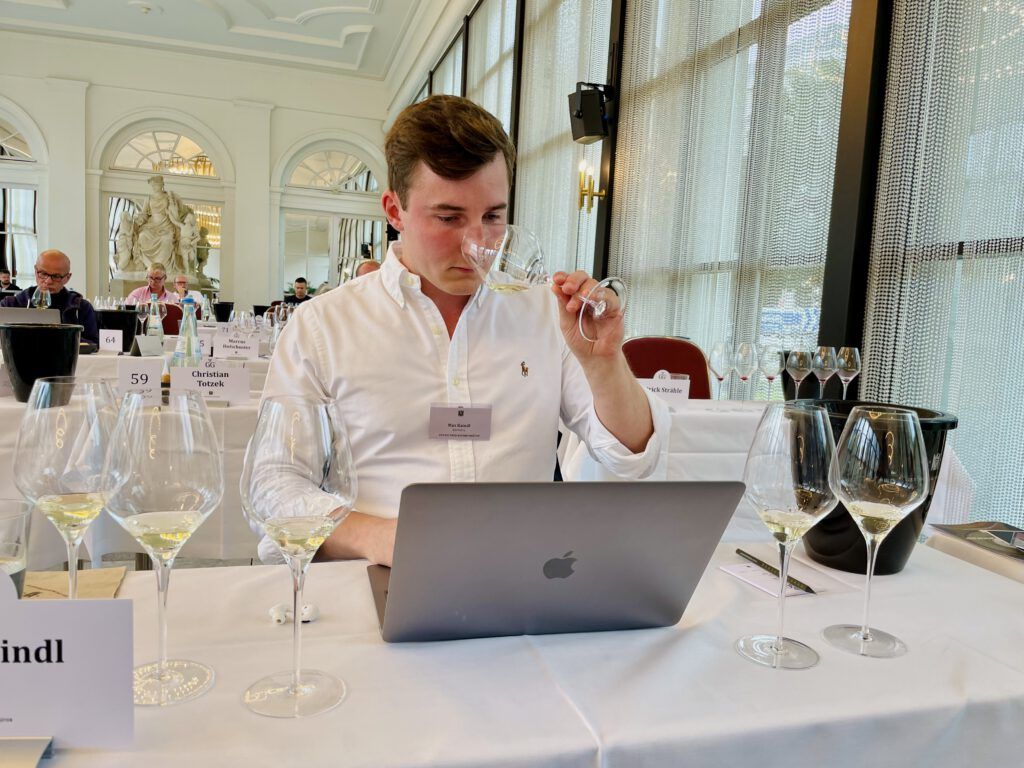Mosel VDP GG (including Saar and Ruwer)
There were 57 Rieslings to taste, all from the 2022 vintage unless stated otherwise.
I began my tasting journey with the wines from the Mosel, aiming to progress from north to south. Unfortunately, there were only a few standout wines in what was otherwise a reasonably solid field of Mosel Rieslings. Additionally, I got the impression that the winemakers in the Saar and Ruwer regions handled the significant drought stress in the vineyards of 2022 better. Some wines from the Middle Mosel region displayed noticeable signs of drought stress, characterized by slightly pungent green herbal notes, less prominent acidity, occasional residual sweetness, and a lack of a solid core. 2022 was indeed not an easy, if not a challenging, year for dry Mosel Rieslings. However, it did produce some very drinkable VDP GG.
Now, let’s dive into my personal highlights from the Mosel, as there were certainly some to be found. If I found more than one wine from a particular winery impressive, I’ll summarize it as a kind of “winery report.” If you’re interested in learning more about my rating system, you can find it here.
In my opinion, Maximin Grünhaus delivered the best collection in the region this year. All three VDP GG from the Grünhäuser hill were consistently excellent. The Bruderberg stood out a bit more for me compared to the Herrenberg and Abtsberg. All three displayed the typical green-spicy Grünhaus nose and on the palate, they had a very firm core, prominent salty lemon notes, invigorating acidity, delicate spicy phenolics, and a very good, juicy length. The Bruderberg leaned towards the brighter, somewhat minty side, the Abtsberg had a touch of almond and a subtle yeastiness on the nose, while the Herrenberg was characterized by herbal notes and a very refined elegance.
Van Volxem also delivered two very strong Rieslings from the Wiltinger Scharzhofberg. The Scharzhofberger P offered a nose of blackcurrant, dark spices, subtly fine herbs, a stony character, and an overall darkness with good depth. On the palate, it was assertive, marked by a dark-spicy, firm phenolic structure, blackcurrant leaves, fine texture, balanced acidity, and very good length and depth. In 2022, it was a true powerhouse, earning an excellent rating.
Similarly, but with an overall slightly lighter profile in both fruit and spices, the “normal” Scharzhofberger presented itself. On the palate, it was fine, elegant, almost dancing, and very well balanced. It certainly has the potential for some very good years ahead, also earning an excellent rating.
I was also impressed by Fritz Haag‘s very classical interpretation of Juffer-Sonnenuhr. On the nose, it initially displayed bright fruit flesh, followed by minty and spicy notes. It was quite fresh, fine, and complex. On the palate, there was a fine balance between delicate salinity, assertive acidity, and firm tannins. Everything felt very compact, bright, fruity-spicy, and had excellent length, earning it an excellent rating. Zilliken’s Rausch appeared elegant and profound. Initially, there were radiant yellow stone fruit aromas, followed by a hint of smoke (although not as intense as usual for Rausch). In the second sniff, some herbs and a touch of quince emerged. On the palate, it was fine and salty, with a deep, firm core, a hint of smoke, and fine texture. Overall, it was quite intense and juicy with very good length, without feeling heavy. It’s already very enjoyable, earning an very good rating. The Hofberg from Grans-Fassian had already impressed me during my visit to the winery in July. The nose carried the characteristic red slate scent of red berries and an iron-like spiciness. On the palate, it was assertive with red-spicy phenolics, red berries, and surprisingly racy acidity. It finished fine, juicy, firm, and compact—something I appreciate greatly. It earned an very good rating. The 2021 Ohligsberg from Haart also delivered a strong performance. It had a bright, classic Riesling nose. On the palate, it was fine and juicy with a slightly sweetish core, assertive spiciness, and a touch of coarse salt. Overall, it felt quite firm but was already enjoyable. It too earned an very good rating.
Sidenote: Nik Weis Layet, Heymann-Löwenstein’s Stolzenberg, and Wegeler’s Doctor turned out to be delightful wines for near-term enjoyment. The Layet (very good) displayed ripe, bright fruit and a touch of pomelo, paired with a pleasant, juicy, slightly sweet core on the palate, along with some chalky notes. On the other hand, the Doctor (very good) from the 2021 vintage took a completely different route with its ripe, exotic profile. Bright spices and an exotic fruit basket blended wonderfully with a hint of sweetness and fine texture. The Stolzenberg offered a bit more herbal character, followed by bright fruit flesh and ripe stone fruit. On the palate, it had a slightly sweet core, milder acidity, fine creaminess, and elegant structure, although it may not age for an extended period. It’s quite enjoyable now — very good.
